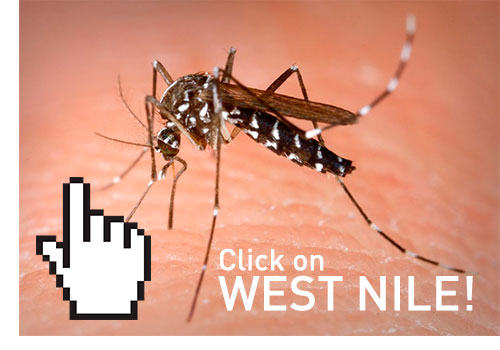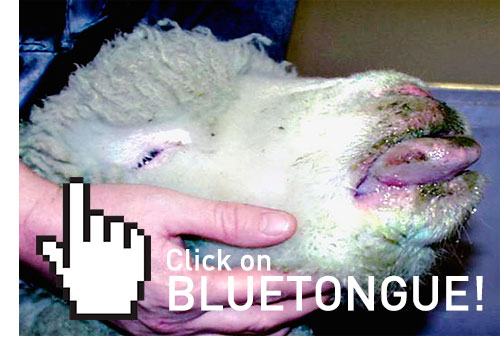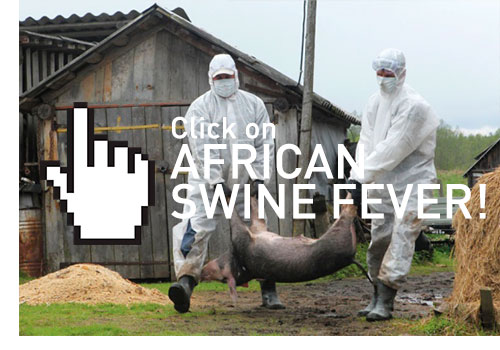EMERGING DISEASES
West Nile (WN)
Víctor Rodríguez Prieto y José Manuel Sánchez-Vizcaíno
SUAT-UCM
 West Nile disease (WN) is a notifiable non-contagious infectious disease caused by a flavivirus. In the last years it has become especially relevant in Europe because of its reemergence, particularly in the countries of the Mediterranean basin. This disease is vectorial, involving mainly mosquitoes of the genus Culex, and affects a wide range of hosts, especially birds (considered to be amplifying hosts), equines and humans (both considered to be dead-end hosts). In equines, this virus is usually associated with a subclinical infection, although a small percentage may suffer from neurological symptoms, or even a severe encephalomielitis leading to the death of animals. In Spain, the virus started to cause outbreaks in 2010 in several farms in southern Andalusia; in 2011 the number of cases increased. Furthermore, a lineage distinct (lineage 2) from the one currently circulating in our country (lineage 1) has been spreading from eastern Europe, causing outbreaks of higher virulence affecting a large number of birds, horses and even humans. Global warming is having a direct influence on the distribution and survival of vectors, which leads to enhance surveillance and control measures against this disease that is exacerbating each new season.
West Nile disease (WN) is a notifiable non-contagious infectious disease caused by a flavivirus. In the last years it has become especially relevant in Europe because of its reemergence, particularly in the countries of the Mediterranean basin. This disease is vectorial, involving mainly mosquitoes of the genus Culex, and affects a wide range of hosts, especially birds (considered to be amplifying hosts), equines and humans (both considered to be dead-end hosts). In equines, this virus is usually associated with a subclinical infection, although a small percentage may suffer from neurological symptoms, or even a severe encephalomielitis leading to the death of animals. In Spain, the virus started to cause outbreaks in 2010 in several farms in southern Andalusia; in 2011 the number of cases increased. Furthermore, a lineage distinct (lineage 2) from the one currently circulating in our country (lineage 1) has been spreading from eastern Europe, causing outbreaks of higher virulence affecting a large number of birds, horses and even humans. Global warming is having a direct influence on the distribution and survival of vectors, which leads to enhance surveillance and control measures against this disease that is exacerbating each new season.
This section contains all information relevant to the epidemiology of WN and its background, current situation and outbreak updates, which will be periodically reviewed by sending new communications. For more information, please consult the West Nile simulation on our website.
Bluetongue (BT)
 Bluetongue (BT) is a re-emerging vector disease in Europe that affects different species of ruminants. It is a disease with great importance due to the serious socioeconomic and sanitary consequences, since it implies restrictions on international trade. Therefore, it is necessary to know the current distribution of the disease in Europe.
Bluetongue (BT) is a re-emerging vector disease in Europe that affects different species of ruminants. It is a disease with great importance due to the serious socioeconomic and sanitary consequences, since it implies restrictions on international trade. Therefore, it is necessary to know the current distribution of the disease in Europe.
This section provides information about the agent and the epidemiology of the disease, its historical evolution, its current status and new updates. We also provide links to web pages with information of interest.
African Horse Sickness
Almudena Sánchez Matamoros y José Manuel Sánchez-Vizcaíno
SUAT-UCM
 African Horse Sickness (AHS) is considered one of the most important diseases affecting equidae for its high pathogenicity (more than 70% mortality in horses) and its high spread, as a vector disease transmitted by mosquitoes. Therefore, entry into an AHS-free country will cause devastating economic and sanitary consequences. Nowadays, this disease has a great importance and is considerate a re-emerging disease in Europe.
African Horse Sickness (AHS) is considered one of the most important diseases affecting equidae for its high pathogenicity (more than 70% mortality in horses) and its high spread, as a vector disease transmitted by mosquitoes. Therefore, entry into an AHS-free country will cause devastating economic and sanitary consequences. Nowadays, this disease has a great importance and is considerate a re-emerging disease in Europe.
This section provides information about the agent and the epidemiology of the disease, its history and new updates to it, which will be regularly updated by sending new communications. Moreover, links with information of interest about the disease are available.
African Swine Fever
 African swine fever (ASF) is considered one of the most complicate diseases of those affecting swine herds. Its current presence in many African countries and the situation out of control in the Caucasus and the Russian Federation, imposes a serious risk for all countries free of the disease, that should be properly prepared and informed to prevent ASF introduction into their borders.
African swine fever (ASF) is considered one of the most complicate diseases of those affecting swine herds. Its current presence in many African countries and the situation out of control in the Caucasus and the Russian Federation, imposes a serious risk for all countries free of the disease, that should be properly prepared and informed to prevent ASF introduction into their borders.
This section contains all the information on the epidemiology of the disease, its history, current situation and new communications, which will be regularly updated.
Schmallenberg Virus (SBV)
Víctor Rodríguez Prieto y José Manuel Sánchez-Vizcaíno
SUAT-UCM
 The emergence of a new previously unknown virus has created an international sanitary alert, especially in the European context. This virus, called "virus Schmallenberg", classified as a negative single-stranded RNA virus, belongs to the family Bunyaviridae and is responsible for causing primarily a reproductive disease in ruminants in northern Europe.
The emergence of a new previously unknown virus has created an international sanitary alert, especially in the European context. This virus, called "virus Schmallenberg", classified as a negative single-stranded RNA virus, belongs to the family Bunyaviridae and is responsible for causing primarily a reproductive disease in ruminants in northern Europe.
In the first epidemic wave (from December 2011 to May 2012) SBV affected eight countries of the European Union. On March 12th, 2012, Spain notified the first outbreak of Schmallenberg disease in a sheep farm in Córdoba (Andalusia). Up to date, infection has been confirmed in more than 4,600 ruminants, with a morbidity rate less than 2%.
The second epidemic wave has become evident in the last months, since several countries are notifying the birth of the typical malformed fetuses (see below) and the mild disease in adult cows. This suggests that SBV has the ability of overwintering in the affected countries. In addition, the virus was found in animals in Switzerland and Denmark.
Clinical findings are characterized by the appearance of fetuses with congenital malformations such as arthrogryposis, torticollis or brain hypoplasia, passing virtually unnoticed in adults. Transmission, like many bunyaviruses, is carried out by midges of the genus Culicoides, the same vectors that transmit the famous bluetongue virus. In fact, the region where outbreaks have originated and their geographical extent resemble the outbreaks of bluetongue serotype 8, occurred in the same countries since August 2006. However, the speed and spread area of SBV infection are much higher, suggesting that there may be several ways of transmission other than Culicoides spp.
Multiple antibody-based diagnostic techniques are designed. In fact, a vaccine against the virus is being developed, since infected animals show significant rates of neutralizing antibodies, encouraging data for the control of infection. Through metagenomics, a newly introduced diagnostic technique, the sequence of viral isolates has been identified. This pathogen is related to with other Orthobunyavirus members of the Simbu serogroup circulating in Asia, Oceania, America and Africa.
Although further epidemiological investigations are needed, this virus may alledgely be a variant of any of these Orthobunyavirus circulating in Africa, though recent studies point that SBV may be more ancient than expected. How it entered northern Europe is unknown. In fact, there are many uncertainties about the extent of this infection: how many animals will be affected, how long cases will continue to appear and how far the infection will spread. The long clinical silence (since an infected midge bites a pregnant female and the moment of parturition when congenital malformations are observed) hampers the notification of new cases of infection.
Therefore, and due to the first outbreak reported in Cordoba, Spanish Ministry of Agriculture, Food and Environment (MAGRAMA) will promote surveillance and control measures to address the potential infection.
However, given the low number of affected animals despite the rapid spread through Europe, health authorities of the European Union together with the OIE have decided not to include this disease in the list of notifiable diseases. This does not mean that the affected countries stop considering surveillance and control measures, since information about this new disease may serve to address the potential infection.

Estas secciones se actualizan periódicamente con nuevas noticias, revisiones sobre la situación epidemiológica y otros datos de interés.


